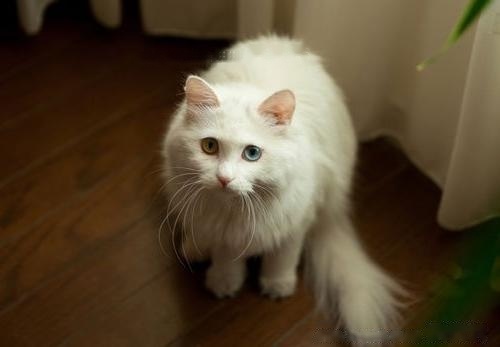Persian cats are relatively quiet and docile pet cats. Although they are a little naughty and lively when they are young, they will be very quiet when they grow up. . In addition, Persian cats are more prone to hair loss, and the fluff on the stomach is easier to knot, so that bacteria can easily hide in it. Therefore, the owner should comb them frequently to keep the Persian cat clean. So how to bathe a Persian cat? What should be paid attention to in the bathing process?

Persian cat
1. Persian cat bathing equipment
bathing Utensils usually include bath tubs, bath towels, detergents, combs (metal, wood or plastic are all good, but one with dense teeth and one with thin teeth is required, and dual-use ones are also acceptable), brushes (bristles or nylon), absorbent cotton Sticks, tweezers, eye ointment, hair dryer, etc.
2. Bathing method
If it is a cat who has developed a bathing habit since childhood, bathing a cat is like bathing a baby, and it can be done by one person . Put warm water at 35℃~40℃ in the basin, do not take too much bath water, as long as the cat will not be submerged; or take a shower and rinse with water slowly. For cats without bathing habits or naughty cats, it is best to have two people cooperate, that is, one person fixes the cat, and the other person bathes the cat. Gently swirl or spray the cat with water while bathing, taking care not to splash water, as splashes may scare the cat. After the cat is completely wet, rub it gently with detergent or neutral soap from the head, neck, back, tail, abdomen to the limbs to generate foam, and then rinse thoroughly with another basin of water or spray. During the entire bathing process, do not let the cat drown, prevent water from pouring into the cat's ears, and avoid soap foam irritating the cat's eyes. After washing, quickly dry with a dry towel, comb through the cat's coat, and put the cat in a warm place. If the indoor temperature is low, use a towel to drape it on the cat to prevent a cold; you can also use a hair dryer to dry it, but pay attention to the temperature of the hair dryer; after the coat is completely dry, carefully comb the coat.
1. Don't take a bath when you are sick. Never take a bath when the kitten is unwell or sick.
2. Control the frequency, and the frequency of bathing should not be too frequent, usually 2-3 times a month. The oil on the kitten's skin has a certain protective effect on the skin and hair. If the number of baths is too frequent, the oil will be lost in large quantities, which will easily make the kitten's hair brittle and reduce the elasticity of the skin, which may become a trigger for skin inflammation. .
3. To prevent colds, keep the room warm when taking a bath, especially in winter to prevent kittens from catching a cold and causing a cold.
4. Defecation and urination, before bathing, the kitten should also be allowed to perform light activities to make the cat excrete feces and urine.
In addition, let's talk about the tears of Persian cats by the way:
Treatment of tears in Persian cats Cats often shed tears when they are sick, and it is common for purebred Persian cats to shed tears problem, but tears in Persian cats are not necessarily due to eye disease or disease. The facial structure of the Persian cat is different from other cat breeds, and the lacrimal gland is shorter. When it sees food or yawns, it tears easily.
Solution:
Oral drugs (but the recurrence will recur after stopping the drug) or surgery (but improper handling may lead to sequelae) . In fact, if you only consider the aesthetics, you don't need to worry too much. You only need to scrub more often and drop chloramphenicol eye drops occasionally.
How to care for a Persian cat? If you choose to raise a Persian cat, you must be fully prepared. It is not easy to raise a Persian cat well, you know The Persian cat that gets everyone screaming on the field requires a lot of energy from the owner to cultivate successfully.
First of all, the lacrimal glands of the Persian cat should be cleaned and wiped every day, otherwise tear marks will gradually form, especially for light-colored Persian cats, such as white, milky, and once the tear marks are stubborn, it is difficult to ensure the cat's Beautiful, but also easy to cause eye diseases.
The care of the Persian cat's coat is the most critical, it is the most attractive part of the Persian cat, in addition to regular bathing, daily grooming and coat care are also very important.
![[Dog Training 5] The training method of pet dog dining etiquette](/static/img/12192/12192_1.jpg)




